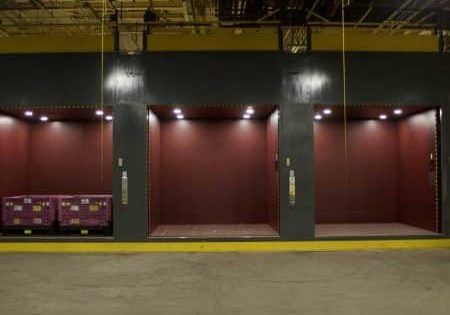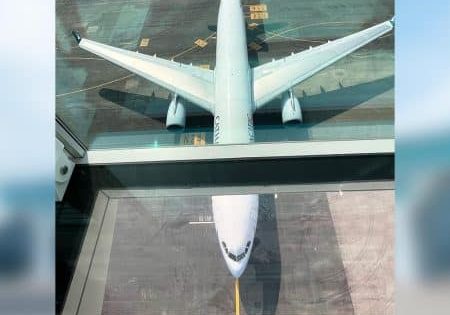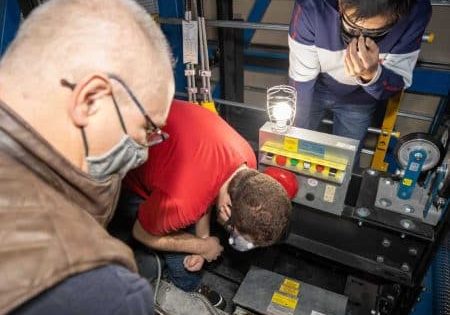“Inflection Point”
Mar 1, 2024
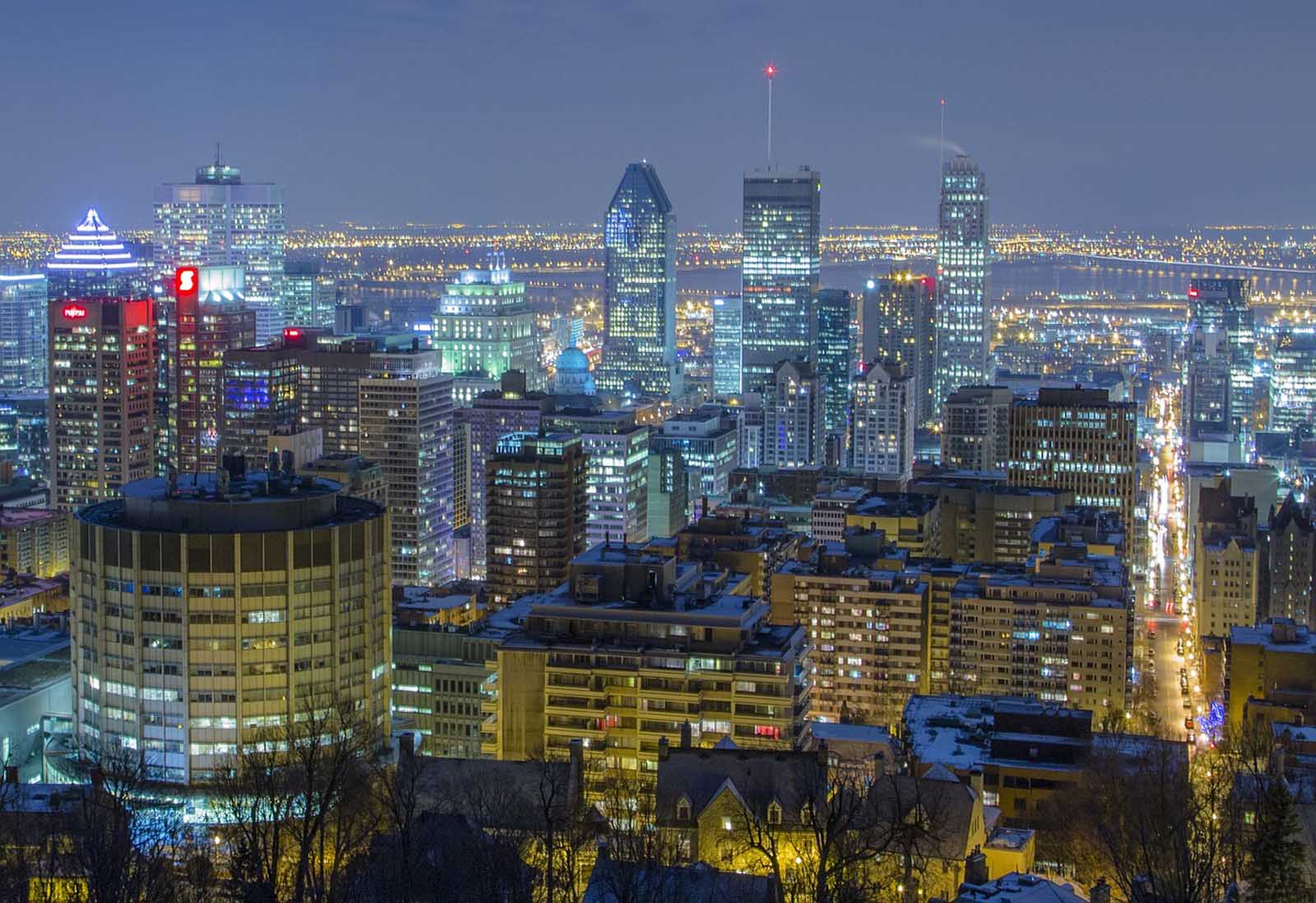
Canada market trends: Skyscrapers rise, cities grow and the VT industry thrives.
In summer 2023, Otis Vice President & Managing Director for Canada Patrick Yeung visited the construction site of Vancouver’s new third-tallest tower (the 587-ft-tall, 57-story The Butterfly condominium building, designed by the late architect Bing Thom and developed by Westbank in the heart of downtown) to see just how useful Otis’ SkyBuildTM elevators were for carrying Otis workers and those from other trades throughout the building. He came away impressed by the utility and versatility of the units, which, this year are being converted to SkyRise® passenger elevators.
On the other side of the country in Toronto, Otis was, at press time, installing SkyBuild elevators at The One, a 329.4-m-tall, 91-story mixed-use building designed by Foster + Partners and developed by Sam Mizrahi. Upon completion, it will be Canada’s first supertall and the country’s tallest building. In all, Otis is supplying 23 elevators to The One, also known as One Bloor West, in the downtown Yorkville neighborhood (ELEVATOR WORLD, August 2020).
The scores of construction cranes and towers reaching ever higher in Vancouver, Toronto and Montreal are indicative of a thriving construction industry that is driving work for vertical-transportation (VT) companies large and small. VT industry players say the industry has largely recovered from the COVID-19 pandemic, which left the maintenance and new construction markets mostly untouched. Modernizations put on hold during the pandemic are starting to come back. Some vestiges of the pandemic remain, however: As more companies adopt a hybrid work model, the nation is seeing a shift away from office-centric construction toward a greater percentage of residential, and suburbs continue to come into their own with a hive of construction activity that includes tall buildings. While elevators for offices might have dominated VT companies’ order books in the past, today they are more likely to proliferate with mixed-use and residential projects, as well as infrastructure that includes transit systems, hospitals and even a nuclear power plant.
Toronto’s suburbs alone could soon have more 150-m-plus skyscrapers than everywhere but NYC, Chicago and Miami in the Western Hemisphere.
— CTBUH Building Data Coordinator S. Isaac Work
Vancouver in the west and Toronto and Montreal in the east are generating a lot of work for Otis, Yeung says. “As urban populations continue to grow, this is driving new construction in the residential, healthcare and transit/infrastructure sectors,” Yeung observes. Echoing industry colleagues, Yeung says the biggest shift Otis has seen in the past few years is away from new commercial office towers and toward healthcare and infrastructure projects — something that’s consistent with many other markets globally. “Growing urban populations are also driving the residential sector, which remains strong in Canada,” he adds.
Canada’s “relatively high” immigration promises to further drive demand for housing, Yeung says, along with infrastructure such as transit and hospitals. Rob Isabelle, chief operating officer at Toronto-based VT consultancy KJA, adds that Canada, in general, boasts “world-class school systems, a multi-cultural-embracing society and a high quality of life,” with Toronto and Vancouver consistently ranking in the top 10 cities in the world in which to live. Canada, he says, currently allows approximately 1 million immigrants each year.
Mixed-Use, Heavy on the Residential
Many cities across Canada (especially Toronto) are seeing a rise in construction of tall buildings, particularly mixed-use with a heavy residential component, says S. Isaac Work, Council on Tall Buildings and Urban Habitat (CTBUH) building data coordinator. Work states:
“Canadian cities of all sizes — including the suburbs of larger cities — have hit an inflection point in new high-rise proposals in the last two years. Bolstered by housing accelerator funds from provincial and federal housing authorities, they are undergoing a paradigm shift from car-centrism to transit-oriented, high-density development. The city of Toronto currently has 23 buildings of at least 150 m in height under construction and a further 212 such proposals which, if completed, will increase its stock of tall buildings by over 375%.
“Suburbs in the Toronto metropolitan area alone have at least 60 buildings proposed or underway in that height range, where nine currently exist. The Canadian urban-to-suburban growth pattern is unprecedented in North American cities. For context, Toronto’s suburbs alone could soon have more 150-m-plus skyscrapers than everywhere but NYC, Chicago and Miami in the Western Hemisphere.”
The primary goal of the steep rise in high-rise proposals seems to be addressing the “acute shortage of housing units nationwide,” Work says, “at least as can be inferred by the outsized proportion of residential-inclusive proposals we’re seeing coming out of Canada.” Plans for office-inclusive tall buildings are not decreasing in quantity from what they were pre-pandemic, Work says, but they represent an increasingly smaller proportion of new proposals. In Toronto, just under 17% of new proposals include office space, and more than a quarter of office-inclusive proposals are mixed-use, “indicating a further desire to diversify building function from the outset,” Work states.
Observations From CECA
Canadian independent elevator companies have similar observations, with Canadian Elevator Contractors Association Executive (CECA) Director Catharine Bothwell saying members’ two largest markets are greater Toronto and greater Vancouver due to population growth in these areas driving demand for residential construction. Certain independents are enjoying quite a bit of business, with Richmond, B.C.’s Richmond Elevator among the busiest companies in the province, handling more than one third of the new installation business with over 4,000 devices under service contracts. “Alberta is also seeing some nice activity with the city of Calgary allocating infrastructure money to help with converting office to residential,” Bothwell adds, referring to an initiative to convert “mid-century blah” office buildings into snazzy new apartments or condos (EW, October 2023).
Anya Codack, president of Vancouver-headquartered CECA member Delco Elevator Products, says modernization and maintenance appear to be driving what she describes as a “slow recovery” from the pandemic. Even better, supply chain challenges have been mitigated, empowering Delco to streamline its inventory management practices and facilitate timely delivery. Logistics and raw materials costs have dropped, allowing Delco to freeze and, in some cases, lower its prices — good news for a smaller supplier striving to stay competitive with the majors. “At this time, we are seeing a significant interest in both modernization and new construction projects, giving us an optimistic outlook for the VT sector over the forthcoming five-year period,” Codack says.
At press time, KJA was working on more than 150 Canadian new-construction projects involving approximately 1,500 elevators and escalators, Isabelle says. Ones involving substantial VT contracts include:
- The new St. Paul’s Hospital in Vancouver (Richmond Elevator)
- The Royal Columbian Hospital redevelopment in Vancouver (Richmond Elevator)
- Metrolinx’s GO Transit Expansion — Eglinton Crosstown and Ontario Line projects in Toronto (at Eglinton Crosstown, Otis for escalators, KONE for elevators)
- 16 York Street, a 33-story office tower in Toronto (TK Elevator [TKE])
- 160 Front Street, a 46-story office tower in Toronto (TKE)
- Toronto-Dominion Centre or TD Centre office tower complex in Toronto (modernization, TKE)
- Brookfield Place tower office complex in Toronto (50-unit modernization, TKE)
- Banque Nationale, the 40-story new bank headquarters in Montreal that is now one of the city’s tallest skyscrapers (Schindler)
Canada Yields Two Recent PoYs for Schindler
Including a large quantity of double-deck elevators, the latter project was EW’s 2024 Project of the Year (PoY) in the Elevators, New Construction category (EW January 2024). A team from Schindler also earned a PoY in the Elevators, Modernization category in 2022 for the Scotia Plaza skyscraper, an iconic, three-tower project originally completed in 1988 in downtown Toronto’s Financial District. “In recent years, Toronto has been a fertile ground for amazing projects, whether it’s new buildings, modernizations or connecting parts of the city,” Schindler observed in 2023.[1] The OEM also spotlighted its 2023 and 2024 PoY winners in addition to The Well, a complex consisting of seven high-rises containing offices, apartments and retail. Schindler provided 19 of its 7000 elevators (18 equipped with the PORT destination-dispatch system), four Schindler 5500 elevators and other equipment for a 36-story office tower there.
Schindler observed:
“The Greater Toronto Area has over 2,000 buildings taller than 30 m, and the downtown area boasts more than 100 skyscrapers that rise to a height of over 100 m (about the height of the Statue of Liberty). Within North America, only NYC has more high-rise buildings.”
Many of those buildings, like Scotia Plaza, were built in the 1980s or before and will soon need modernizing, including their VT equipment. “There are plenty of other modernization projects on the horizon in Canada,” according to Schindler, and the company looks forward to taking these projects on.
Other elevator companies are ready, too. “We know that much of the global elevator population — including in Canada — will require modernization in the coming years, especially as customers increasingly look for the latest in connected technologies and energy efficiency,” Yeung says.
CECA membership say modernizations came to a standstill because of the COVID-19 pandemic but are starting to pick back up. Maintenance and new construction, Bothwell says, were unaffected.
In KJA’s portfolio of work, Isabelle says infrastructure has surged as new commercial developments slowed to a crawl with major new projects reaching completion. “We’ve seen a record-high number of hospital and transit projects,” Isabelle says. “There is still some modernization work, however it’s generally limited to the residential side with dozens of two- to three-car projects.”
Recent Otis infrastructure contracts include:
- Hôpital Vaudreuil-Soulanges in Montreal (28 elevators, including 11 SkyRise units)
- Montreal Metro’s Blue Line (97 escalators across 17 existing stations and five new stations)
- Working in collaboration with Fujitec, Global-Tardif Elevator Manufacturing Group announced in fall 2023 it had been awarded a contract for 15 panoramic machine-room-less elevators for the Broadway-City Hall Station in Vancouver, part of a 5.7-km extension of the Millennium Line being undertaken by TransLink and the City of Vancouver (EW, January 2024). Observing that the “Canadian market remains very active,” The Peelle Co. VP of Business Development Michael J. Ryan says Peelle provided 22 new power freight elevator doors and four new power gates to the Darlington Nuclear Generating Station on the north shore of Lake Ontario in Clarington, Ontario. “We’re also excited about the many transit systems for which Peelle installed glass entrances and doors for accessibility elevators,” Ryan says.
In terms of building tall post-pandemic, construction has plateaued back to a level that is even with the completion rate of the last decade, Work says. Until 2020, Canada had completed 111 buildings taller than 150 m nationwide. That has since grown to 144 completed 150-m-plus buildings, with a further 266 in the proposal phase. But there’s a “but.” Work says:
“Until significant construction starts on a large cohort of these projects, tall building growth may still appear stagnant to the outside viewer for the next two to three years. We fully expect Canada, and the Toronto area specifically, to headline the late 2020s to early 2030s in tall-building completions with a higher proportion of residential or mixed-use functions and a polycentric diffusion away from the CBD as we currently understand it.”
In the meantime, no doubt VT companies have plenty to keep them busy. Predicts Isabelle: “Canada will continue firing on all cylinders — not only for the next five years but for the next couple of decades.”
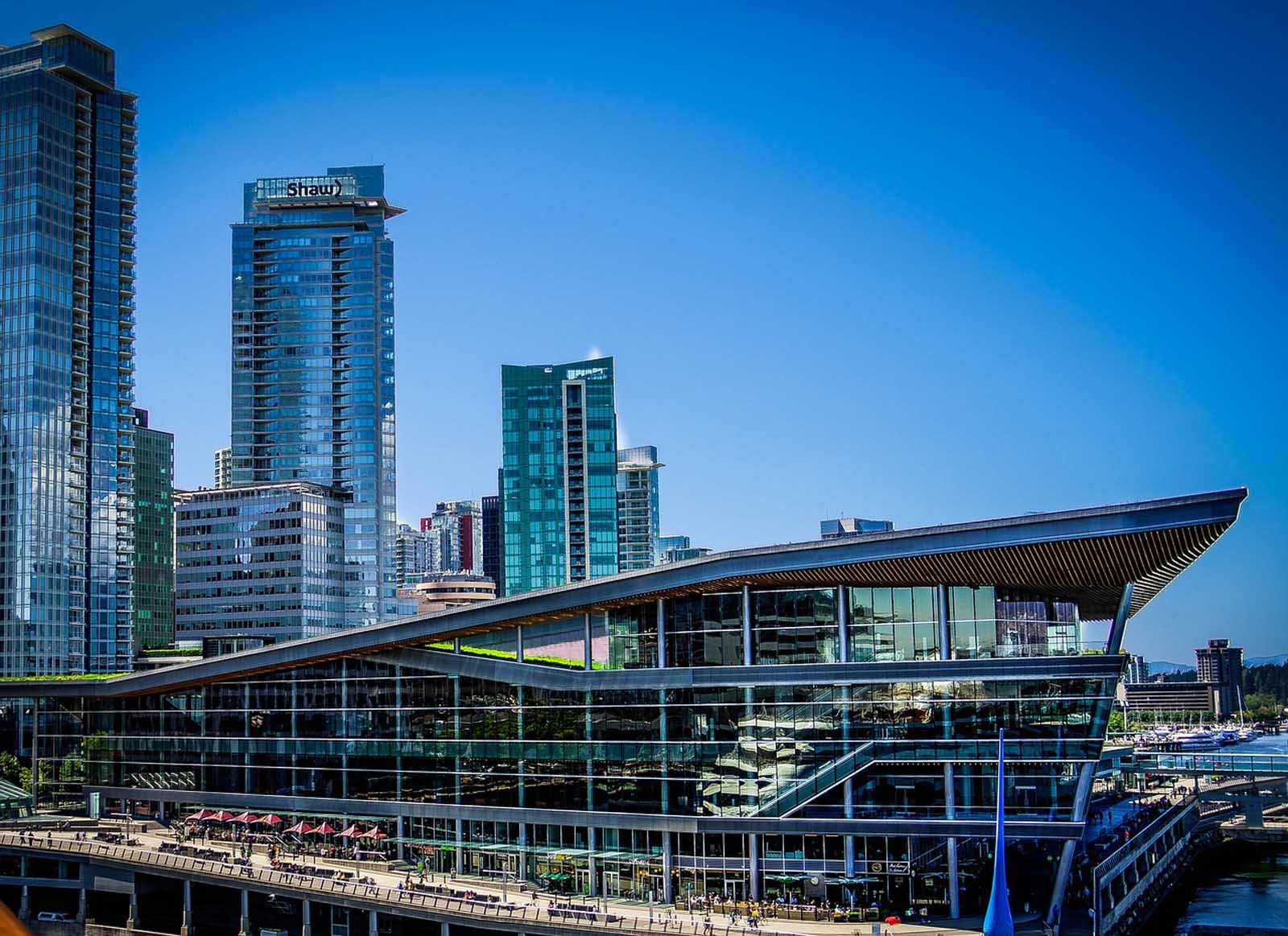


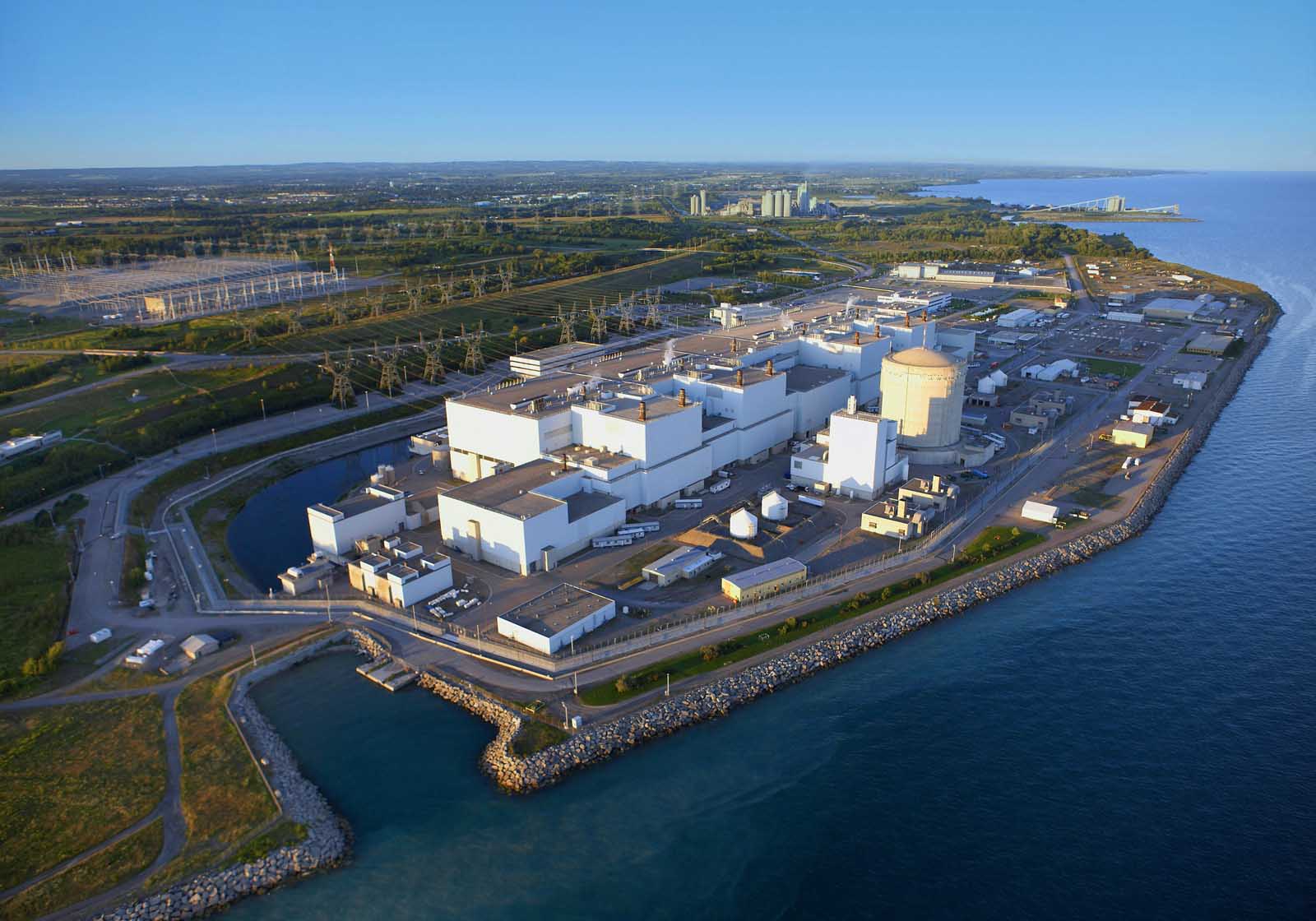
Reference
[1] group.schindler.com/en/media/stories/well-done-toronto.html
Get more of Elevator World. Sign up for our free e-newsletter.



